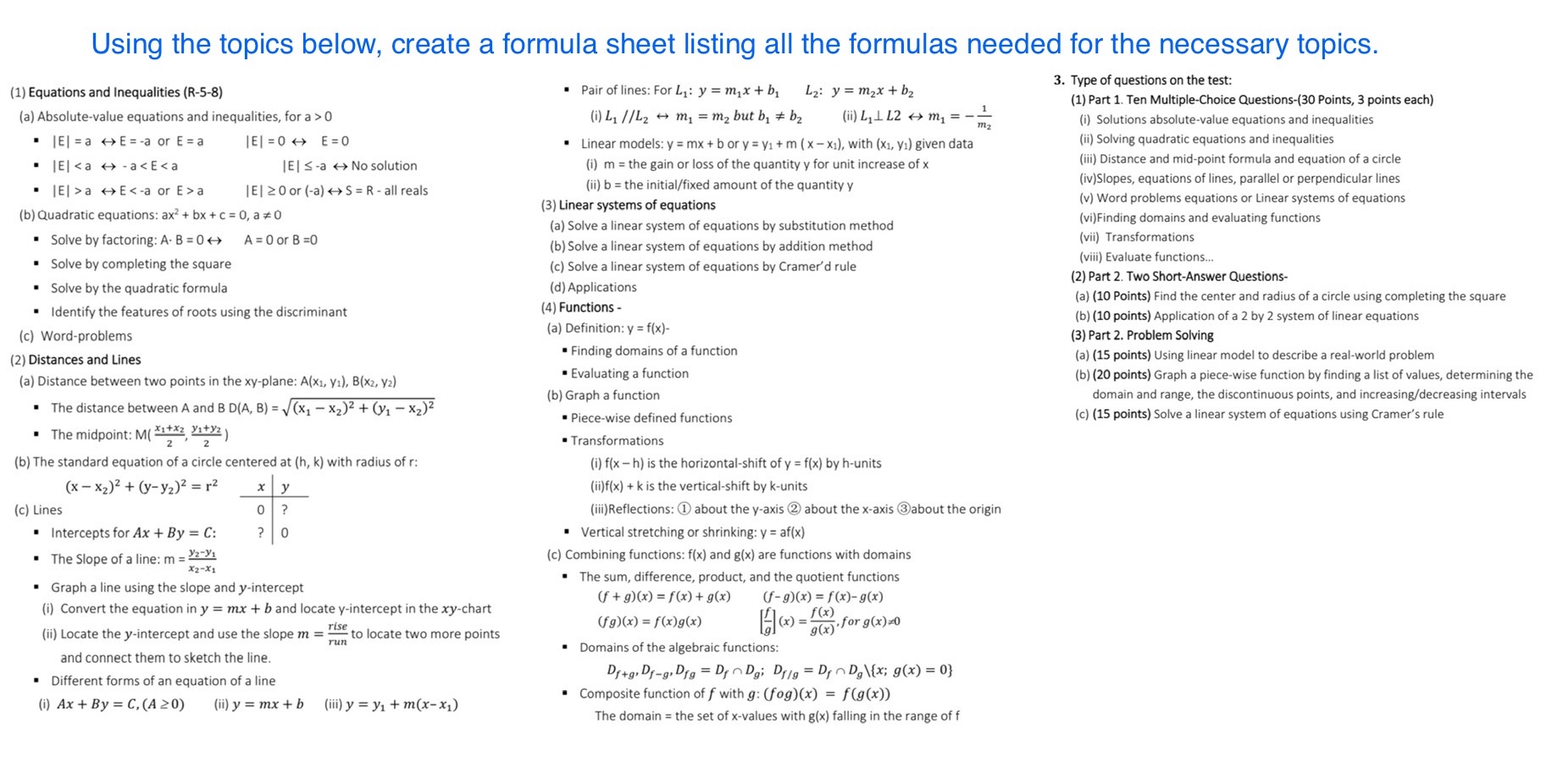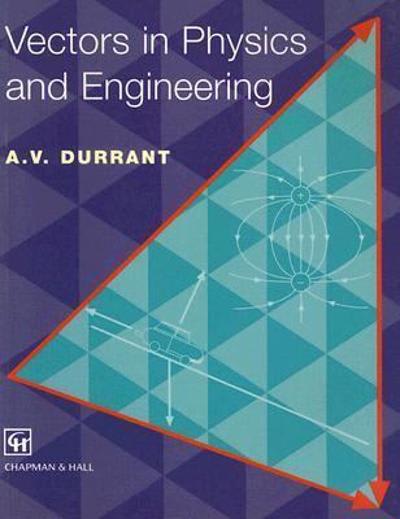
Follow the instructions in blue below and use the information underneath to answer the question.
Using the topics below, create a formula sheet listing all the formulas needed for the necessary topics. (1) Equations and Inequalities (R-5-8) " Pair of lines: For L, : y = mix + b, L2: y = myx + bz 3. Type of questions on the test: (1) Part 1. Ten Multiple-Choice Questions-(30 Points, 3 points each) (a) Absolute-value equations and inequalities, for a > 0 (i) L1 //L2 + m, = my but b, # bz (ii) LIL2 + m, = -1 (i) Solutions absolute-value equations and inequalities . |E| = a E = -a or E = a |E| =0 E=0 " Linear models: y = mx + b ory = y1 + m (x -x1), with (x1, y1) given data (ii) Solving quadratic equations and inequalities . |E| -a
a E a |E| 2 0 or (-a) S = R - all reals (ii) b = the initial/fixed amount of the quantity y (v) Word problems equations or Linear systems of equations (b) Quadratic equations: ax? + bx + c = 0, a# 0 (3) Linear systems of equations (a) Solve a linear system of equations by substitution method (vi) Finding domains and evaluating functions . Solve by factoring: A. B = 0 A= 0 or B=0 (b) Solve a linear system of equations by addition method (vii) Transformations . Solve by completing the square (c) Solve a linear system of equations by Cramer'd rule (vili) Evaluate functions... (2) Part 2. Two Short-Answer Questions- . Solve by the quadratic formula (d) Applications (a) (10 Points) Find the center and radius of a circle using completing the square . Identify the features of roots using the discriminant (4) Functions - (b) (10 points) Application of a 2 by 2 system of linear equations (c) Word-problems (a) Definition: y = f(x)- (3) Part 2. Problem Solving . Finding domains of a function (2) Distances and Lines (a) (15 points) Using linear model to describe a real-world problem (a) Distance between two points in the xy-plane: A(x1, y1), B(x2, yz) . Evaluating a function (b) (20 points) Graph a piece-wise function by finding a list of values, determining the (b) Graph a function domain and range, the discontinuous points, and increasing/decreasing intervals " The distance between A and B D(A, B) = (X, - X2)2 + (V1 - X2)2 . Piece-wise defined functions (c) (15 points) Solve a linear system of equations using Cramer's rule " The midpoint: M( 12, - Transformations (b) The standard equation of a circle centered at (h, k) with radius of r: (i) f(x - h) is the horizontal-shift of y = f(x) by h-units ( x - X2)2 + (y-y2)2 = r2 x y (ii)f(x) + k is the vertical-shift by k-units (c) Lines (iii) Reflections: (1 about the y-axis 2 about the x-axis @about the origin " Intercepts for Ax + By = C: . Vertical stretching or shrinking: y = af(x) . The Slope of a line: m = 12-y (c) Combining functions: f(x) and g(x) are functions with domains X2-X1 . The sum, difference, product, and the quotient functions . Graph a line using the slope and y-intercept (f + g)(x) = f(x)+g(x) (f-9)(x) = f(x)-g(x) (i) Convert the equation in y = mx + b and locate y-intercept in the xy-chart (fg)(x) = f(x)g(x) (ii) Locate the y-intercept and use the slope m = - to run to locate two more points g (x) . for g(x)20 . Domains of the algebraic functions: and connect them to sketch the line. . Different forms of an equation of a line Df+g, Df-g. Dig = DIDgi Dfig = D, D, \\(x; g(x) = 0} (i) Ax + By = C, (A 20) (ii) y = mx + b (iii) y = y1 + m(x-x1) . Composite function of f with g: (fog)(x) = f(g(x)) The domain = the set of x-values with g(x) falling in the range of f








